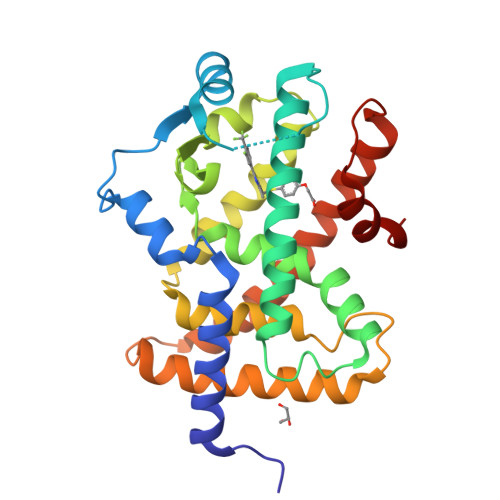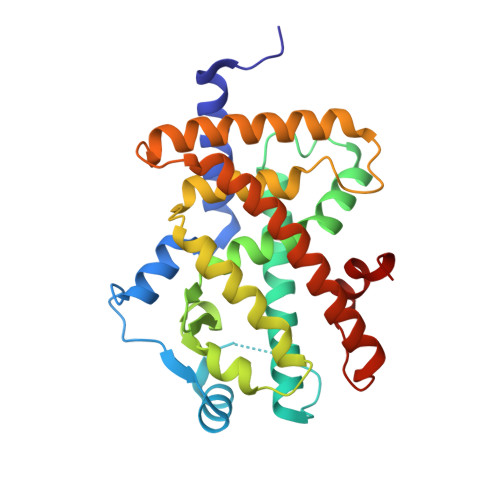Structural Insights into Human Peroxisome Proliferator Activated Receptor Delta (PPAR-Delta) Selective Ligand Binding.
Batista, F.A., Trivella, D.B., Bernardes, A., Gratieri, J., Oliveira, P.S., Figueira, A.C., Webb, P., Polikarpov, I.(2012) PLoS One 7: e33643-e33643
- PubMed: 22606221
- DOI: https://doi.org/10.1371/journal.pone.0033643
- Primary Citation of Related Structures:
3TKM - PubMed Abstract:
Peroxisome proliferator activated receptors (PPARs δ, α and γ) are closely related transcription factors that exert distinct effects on fatty acid and glucose metabolism, cardiac disease, inflammatory response and other processes. Several groups developed PPAR subtype specific modulators to trigger desirable effects of particular PPARs without harmful side effects associated with activation of other subtypes. Presently, however, many compounds that bind to one of the PPARs cross-react with others and rational strategies to obtain highly selective PPAR modulators are far from clear. GW0742 is a synthetic ligand that binds PPARδ more than 300-fold more tightly than PPARα or PPARγ but the structural basis of PPARδ:GW0742 interactions and reasons for strong selectivity are not clear. Here we report the crystal structure of the PPARδ:GW0742 complex. Comparisons of the PPARδ:GW0742 complex with published structures of PPARs in complex with α and γ selective agonists and pan agonists suggests that two residues (Val312 and Ile328) in the buried hormone binding pocket play special roles in PPARδ selective binding and experimental and computational analysis of effects of mutations in these residues confirms this and suggests that bulky substituents that line the PPARα and γ ligand binding pockets as structural barriers for GW0742 binding. This analysis suggests general strategies for selective PPARδ ligand design.
Organizational Affiliation:
Instituto de Física de São Carlos, Universidade de São Paulo, São Carlos, Sao Paulo, Brazil.




















